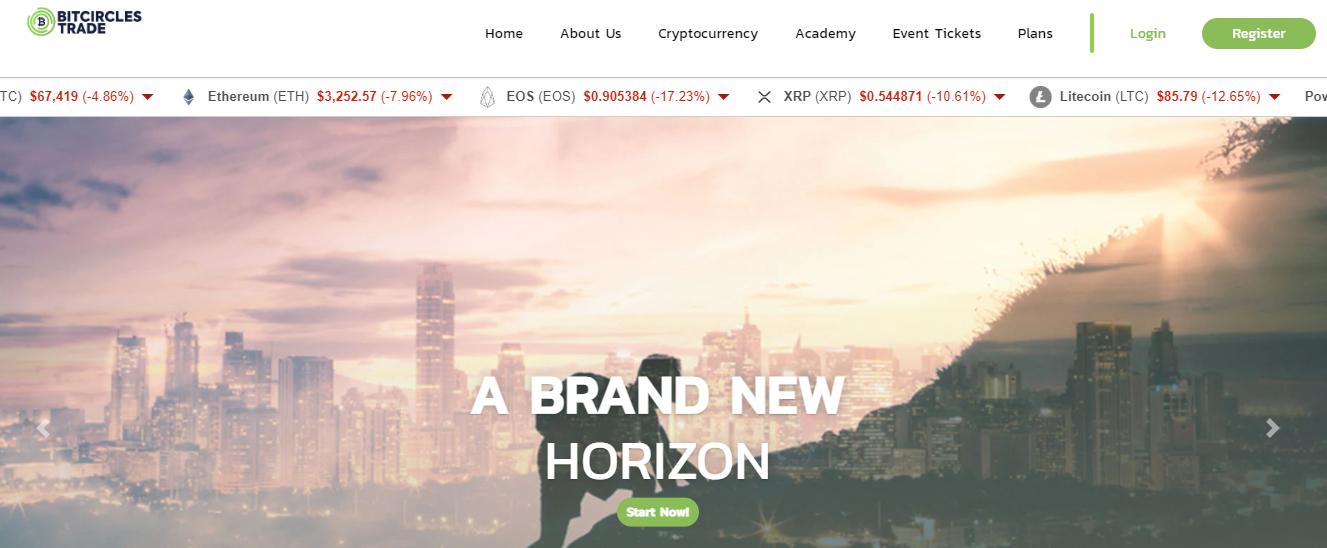Table of Contents
- Understanding the Domain Name Market Dynamics
- Identifying Profitable Domain Names for Resale
- Effective Strategies for Domain Acquisition
- Marketing Techniques to Boost Your Domain Sales
- Maximizing Your Profits Through Domain Portfolio Management
- Q&A
- The Way Forward


Understanding the Domain Name Market Dynamics
The domain name market is a dynamic ecosystem influenced by various factors that determine value and demand. One key aspect is the perceived value of a domain, which is often shaped by its length, keywords, and brandability. Short, memorable domain names that incorporate popular search terms generally fetch higher prices. For instance, a domain like BestCoffee.com holds substantial potential due to its direct relevance to a thriving market sector. Additionally, extensions like .com are typically more desirable than others, highlighting the importance of choosing the right TLD (Top Level Domain).
Market trends significantly impact the buying and selling landscape. Regular assessments of bid prices in auctions and sales help determine fair market values for domains. Monitoring tools and platforms can provide crucial insights into trending keywords and emerging industries. Some essential factors include:
- Search Volume: High search volume for specific keywords can increase demand.
- Brand Recognition: Domains that align with well-known products or services can be more valuable.
- Market Sentiment: Current events and business trends can sway buyer interest.
Another critical element is the impact of domain flipping strategies on market dynamics. Successful flippers often employ analytical tools to evaluate potential acquisitions and sales strategies. A structured approach may involve:
| Strategy | Description |
|---|---|
| Research & Analysis | Identify profitable niches and evaluate domain metrics. |
| Branding Potential | Focus on domains that can create a strong brand identity. |
| Marketing | Utilize SEO and social media for effective promotions. |
Understanding these dynamics provides a solid foundation for anyone looking to enter the flipping domain names arena. By staying informed and adapting to market changes, investors can strategically position themselves for profitable outcomes.


Identifying Profitable Domain Names for Resale
When venturing into the domain flipping market, the key to success lies in pinpointing domain names that not only catch the eye but also house underlying potential. To identify such opportunities, start by delving into current market trends and popular keywords. By using tools like Google Trends and keyword planners, you can gather insights into what’s trending. Focus on short, memorable names that resonate with a specific niche.
Another strategy worth exploring is the use of domain name generators, which can stimulate new ideas based on relevant keywords. Look for domains that contain elements like popular extensions (e.g., .com, .net, .org) since these often perform better in resale scenarios. Furthermore, consider the domain’s history; previously owned domains with quality backlinks or traffic can significantly boost their value. Pay attention to:
- Avoid numbers and hyphens – they tend to confuse users.
- Examine length – ideal domains are usually 1-3 words.
- Check trademark issues – ensure you’re not infringing on existing brands.
it’s beneficial to utilize domain valuation tools that assess the worth of a domain based on various factors, including length, extension, and market demand. A well-researched valuation can lead you to make informed purchasing decisions. Here’s a simple table to illustrate factors influencing domain valuation:
| Factor | Description |
|---|---|
| Keyword Strength | High-ranking keywords can enhance visibility and SEO. |
| Length | Shorter domains are easier to remember and market. |
| History | An established history often increases perceived value. |


Effective Strategies for Domain Acquisition
Successfully acquiring domain names requires a strategic approach that maximizes your chances of landing valuable assets. One effective strategy is to conduct thorough research on trending keywords and phrases relevant to specific markets. This can include using tools like Google Trends, SEMrush, or Ahrefs to identify high-demand terms. Once you’ve compiled a list, aim to purchase domains that incorporate these keywords or phrases, as they often command higher resale prices. Additionally, consider targeting domains with a history of organic traffic, as they can provide immediate value upon acquisition.
Another tactic involves shopping for expired or expiring domains. These domains might still possess valuable backlinks and established traffic. Utilize platforms like GoDaddy Auctions, NameJet, or SnapNames to find domain auctions or expiring listings. Look for domains that have minimal history of penalties and maintain good SEO rankings. Understanding domain metrics, such as Domain Authority (DA) and Page Authority (PA), can help you make informed decisions during this process.
networking within the domain acquisition community can introduce you to exclusive opportunities. Participate in forums like NamePros or DomainSherpa, where you can share insights and discover potential deals. Engaging with other domain investors can lead to valuable partnerships and tips. Attend industry conferences to meet experts and discuss trends that may influence the marketplace. By building relationships and staying updated with industry shifts, you can enhance your domain acquisition efforts.
Marketing Techniques to Boost Your Domain Sales
Utilizing effective marketing techniques can significantly enhance the visibility and sales potential of your domain names. First and foremost, it’s essential to create a compelling landing page for each domain you intend to sell. This page should clearly describe the value of the domain, its potential use cases, and any SEO benefits it may offer. Consider employing eye-catching visuals and a clean design to engage visitors and create an inviting atmosphere. Additionally, including testimonials or past sales success stories can help build credibility with prospective buyers.
Another powerful strategy is leveraging social media platforms and online marketplaces dedicated to domain sales. By promoting your domains on sites like Facebook, Twitter, and LinkedIn, you can reach a wider audience who may not be actively searching for domains but could be intrigued by what you have to offer. Engage in targeted advertising on these platforms to reach niche markets and apply the following tactics for maximum impact:
- Utilize eye-catching visuals to capture interest.
- Employ hashtags related to domain buying and internet entrepreneurship.
- Join and participate in relevant online communities and forums.
consider using email marketing campaigns to keep potential buyers informed about your listings. Building a subscriber list of interested parties allows you to directly communicate new acquisitions or discounts. Additionally, A/B testing different email subject lines and content can help you determine what resonates best with your audience. To streamline this process, you might find the following table helpful in tracking your email campaign performance:
| Email Subject Line | Open Rate (%) | Click-Through Rate (%) |
|---|---|---|
| Exclusive Domain Sale - Limited Time! | 30% | 10% |
| Your Next Great Domain Awaits | 25% | 12% |
| Don’t Miss Out: Premium Domains Available | 28% | 15% |
By implementing these techniques, you can create a robust marketing strategy that increases your chances of successfully selling your domains for a profit.


Maximizing Your Profits Through Domain Portfolio Management
Building a successful domain portfolio requires a strategic approach that not only enhances the value of your assets but also maximizes your profit potential. First, it’s essential to research market trends regularly. Keep an eye on emerging keywords, industry developments, and popular sectors in order to acquire domains that demonstrate potential growth. By focusing on short, memorable, and keyword-rich domain names, you create a selection of valuable assets that can attract the right buyers when it’s time to flip.
Next, effective management of your domain assets means diversifying your portfolio. Consider including domains from various niches, such as technology, health, and entertainment. This diversification not only spreads risk but also opens up multiple avenues for profitability. Alongside this practice, maintaining your portfolio diligently by renewing important domain names and selling low-performing ones ensures that your investment remains profitable and growth-focused. Keep an organized system to track your domains, including purchase dates, renewal timelines, and potential sale values.
To further enhance your profit margins, leverage online platforms and marketplaces dedicated to buying and selling domain names. Utilize tools that can provide you with insights and analytics to assess the value of your domains against current market demands. Here’s a simple table showcasing an example of domains you might consider for flipping:
| Domain Name | Category | Potential Value |
|---|---|---|
| HealthTechGuru.com | Health | $2,500 |
| EcoHomeSolutions.com | Environment | $1,800 |
| SmartGadgetReview.com | Technology | $2,200 |
By frequently analyzing the market and adjusting your strategy accordingly, you can capitalize on trends and make informed decisions that contribute to a robust portfolio—ultimately leading to higher sales and increased profits.
Q&A
Q&A: Flipping Domain Names for Profit
What is domain flipping?
Domain flipping is the practice of buying domain names at a low price and selling them later at a profit. This involves identifying valuable or trendy domain names, purchasing them, and then reselling to individuals or businesses looking to establish an online presence.How do I find valuable domain names to flip?
To find valuable domain names, consider using tools such as domain auction sites, expired domain databases, and keyword research tools. Look for short, memorable names, or names that include trending keywords. Additionally, consider niche markets or emerging industries that might value specific domains.What factors determine the value of a domain name?
Several factors influence a domain name’s value, including:- Length: Short, concise names are typically more desirable.
- Keyword relevance: Domains that include popular or trending keywords can attract higher offers.
- Extension: .com domains usually have the highest value, though other extensions like .net, .org, or newer ones can also be valuable in specific contexts.
- Market demand: A domain that’s highly sought after in a specific niche can command a premium price.
How can I increase the value of my domain before selling it?
To increase a domain’s value, you can:- Build a basic website: Establishing a presence can make the domain more attractive.
- Improve SEO: Optimize the site for search engines to drive organic traffic.
- Create a brand around the domain: Develop a logo, social media presence, and content strategy that showcases the potential of the domain.
What are the risks involved in domain flipping?
While domain flipping can be profitable, there are risks, including:- Market saturation: The domain market can be competitive, and not all domains will sell.
- Legal issues: Ensure you’re not infringing on trademarks or copyrights when purchasing a domain.
- Holding costs: If the domain doesn’t sell right away, renewal fees can cut into your profits.
Where can I sell my domain names?
You can sell domain names through various platforms, including:- Domain auction sites: Websites like GoDaddy Auctions, Sedo, and Flippa allow you to list your domains for sale.
- Marketplace websites: Sites like Afternic or Namecheap offer a marketplace for buyers and sellers.
- Social media: Promote your domains on platforms like Twitter, Facebook, or LinkedIn to reach potential buyers.

